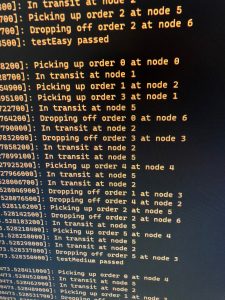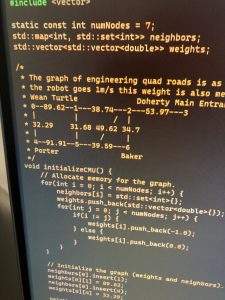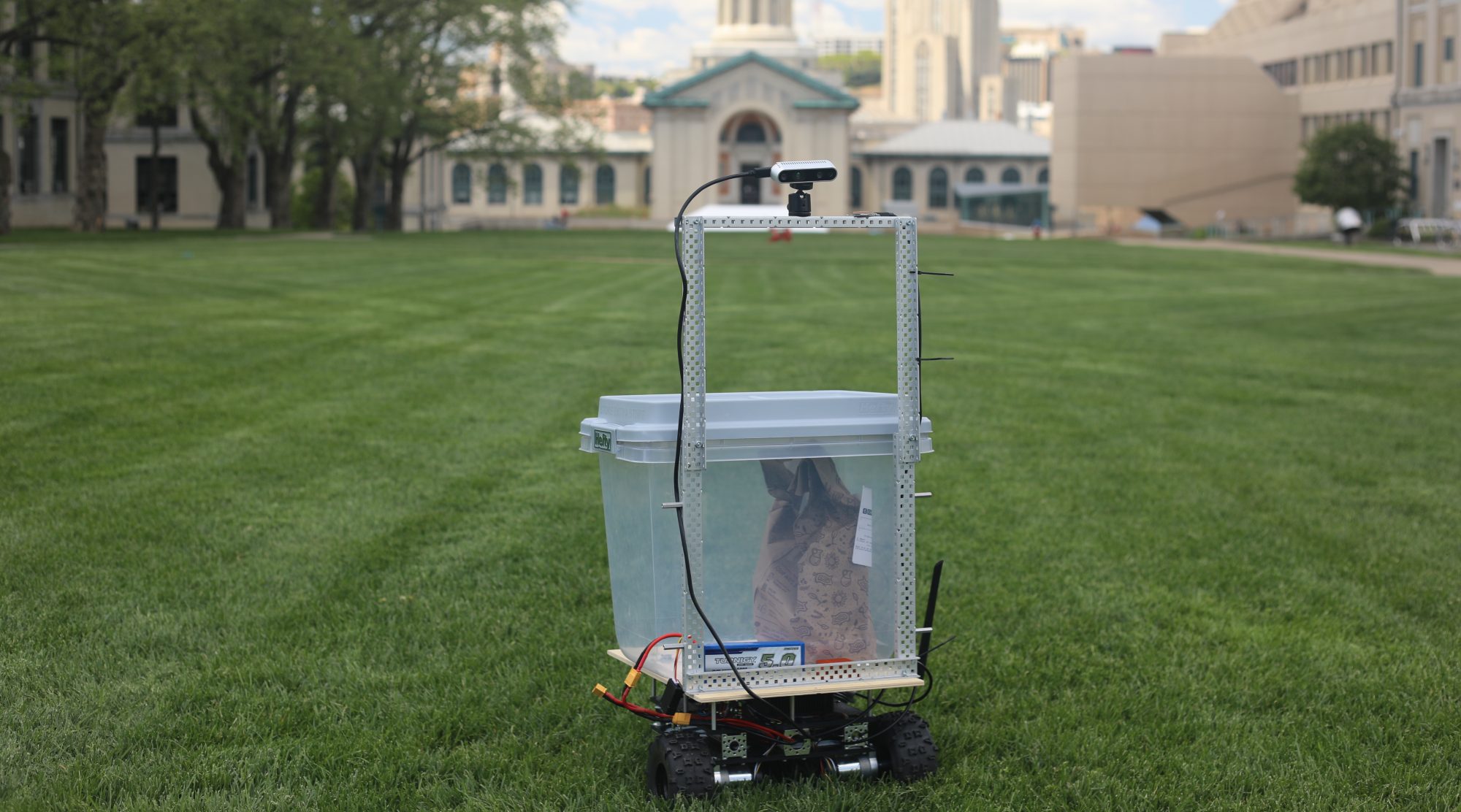- Accomplishments for the week:
- This week, most of my time was spent implementing the multi-order algorithm. It actually works!
- It’s a backtracking algorithm that recurses on all possible states of the robot, and precomputes all shortest paths between nodes on an input graph to speed up algorithm computation.
- It returns the first series of moves that it finds to be satisfactory to our timing requirements, so it’s just a constraint satisfaction problem for now.

- I also started on a ROS node that can act as the global planner, which takes in orders and sends commands and waypoints to the robot.
- There are two APIs for the ROS node: the first is the algorithm solver API and the second is the global planner node.
- The repo is here: https://github.com/pythonicmux/multiorderAlgorithm
- To test the algorithm, I created a weighted undirected graph of the engineering area of campus (that’s located in the test file on the repo, multiorder_alg_node.cpp). The weights are based on distances between selected road intersections on campus.

- I assisted Advaith in trying out SLAM outdoors and setting up the Xavier to try localization on it.
- I gave the proposal presentation and helped out with parts prediction, doing some calculations to ensure that our motors can supply enough torque for the inclines and the battery can power everything.
- This week, most of my time was spent implementing the multi-order algorithm. It actually works!
- Progress:
- I am currently on-schedule with my tasks.
- Next week’s deliverables:
- Next week, my deliverables are to finalize the global planner code and thoroughly test it with unit tests and a simulation of a user sending it orders and robot sending it status updates.
- Possibly make the multiorder algorithm an optimization algo by minimizing total distance travelled + NP hard proof??
- Design presentation slides
- Parts ordering

Carnegie Mellon ECE Capstone, Spring 2021 | Michael Li, Sebastian Montiel, Advaith Sethuraman